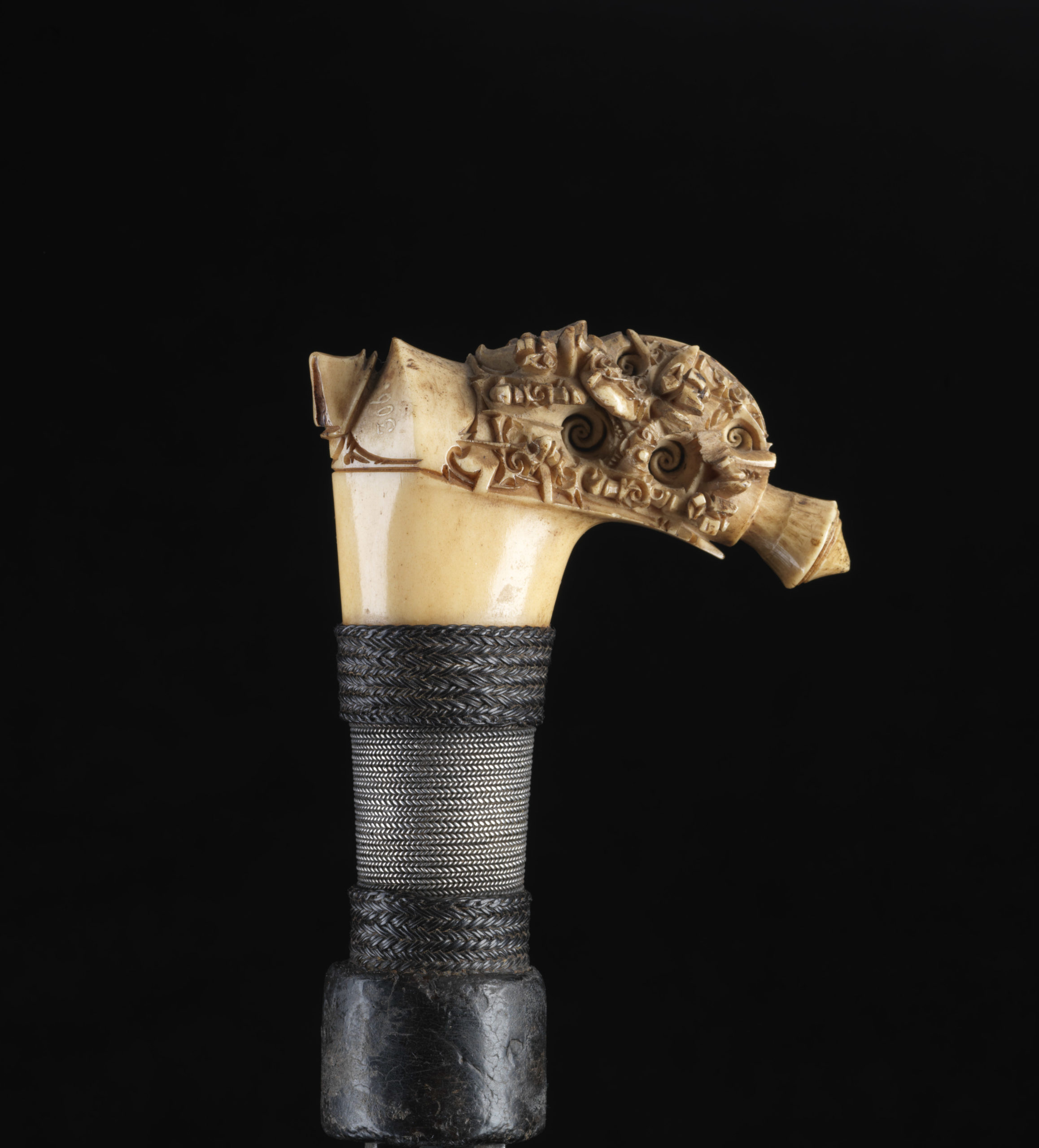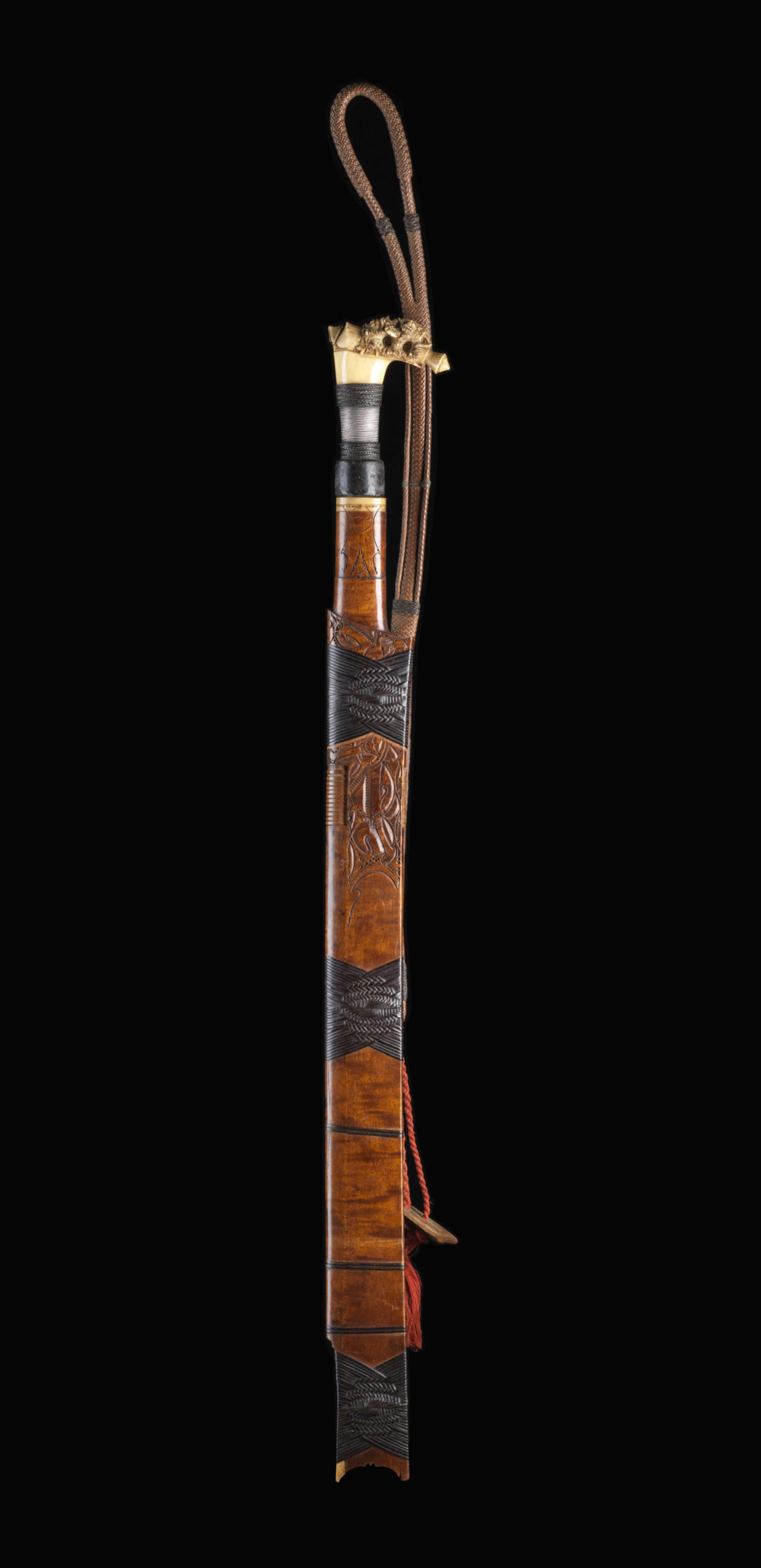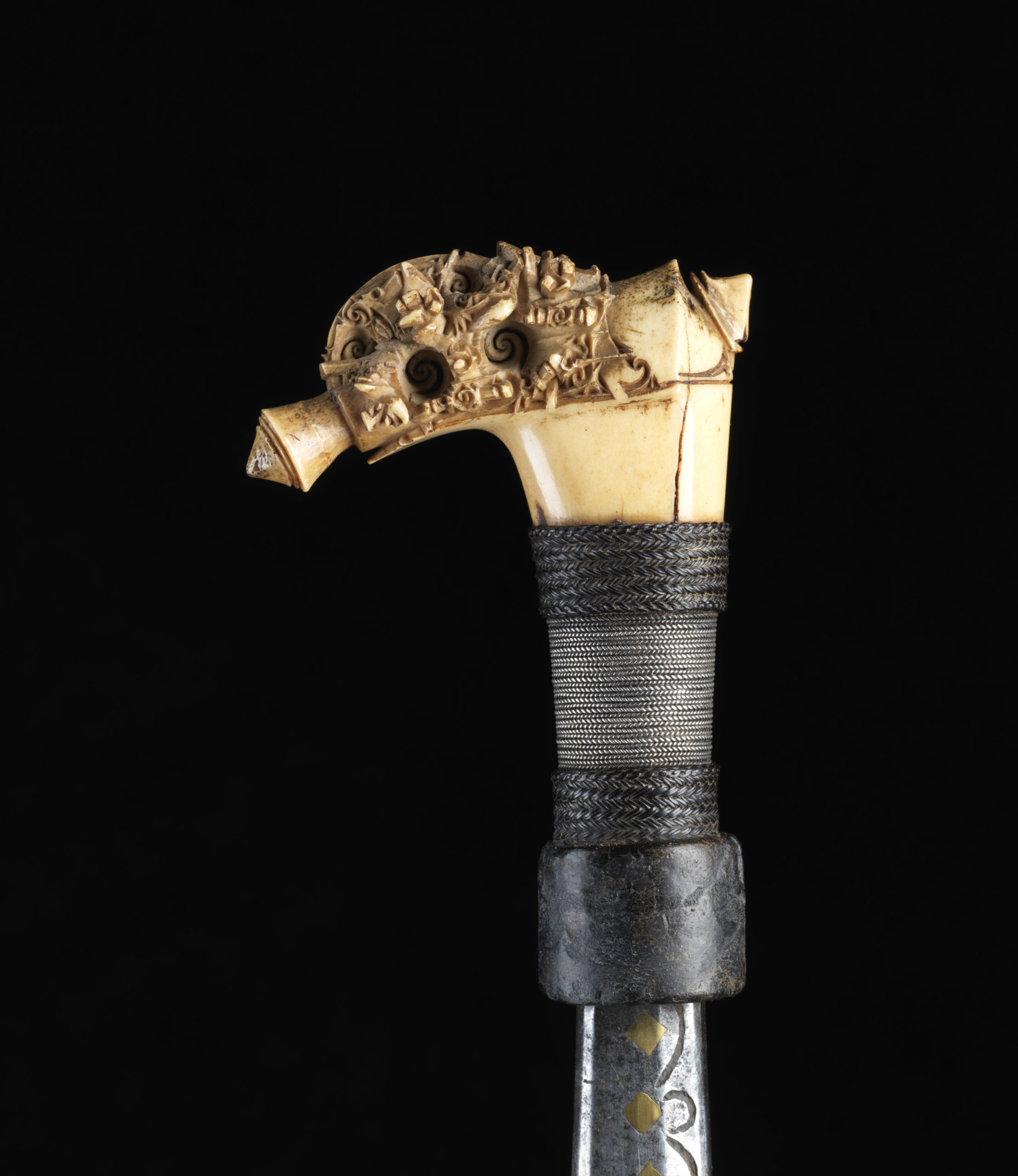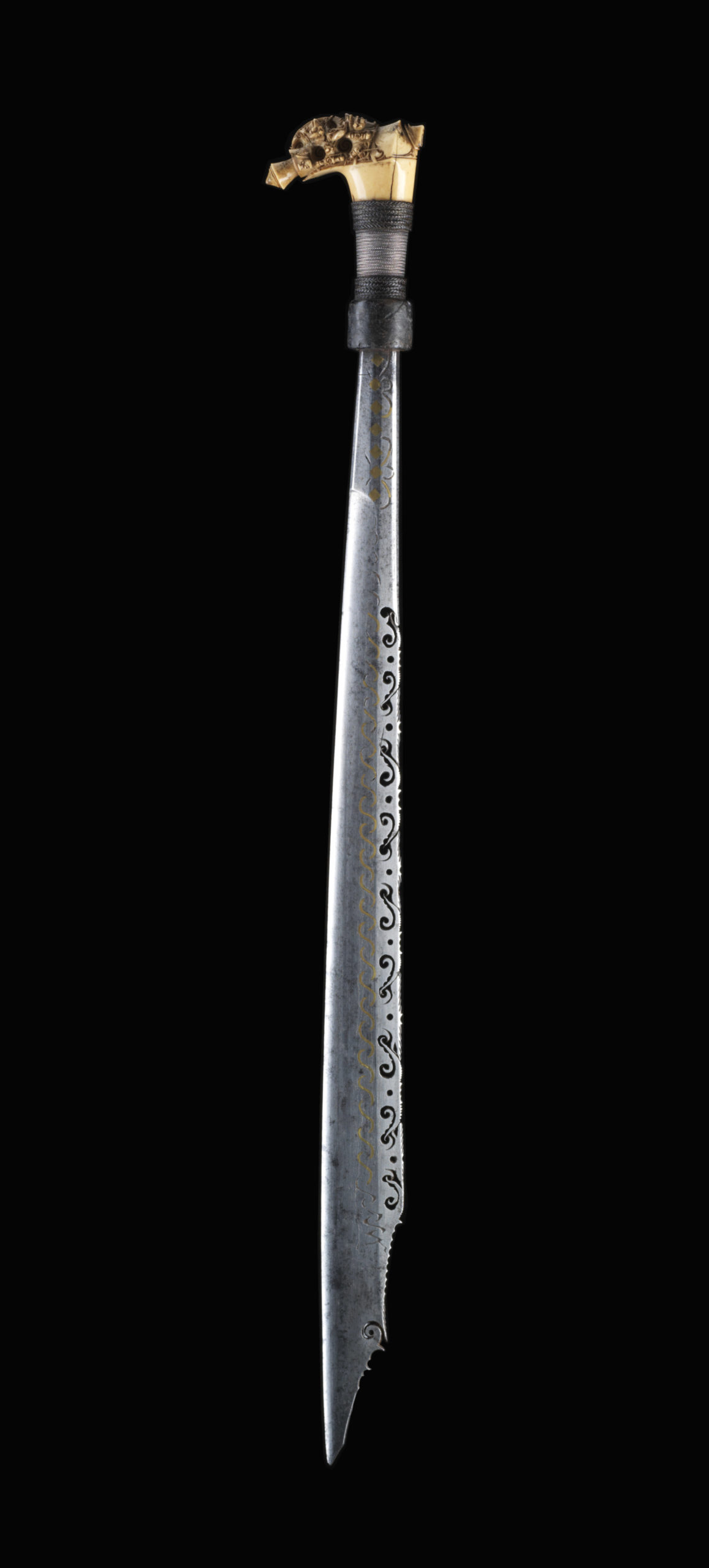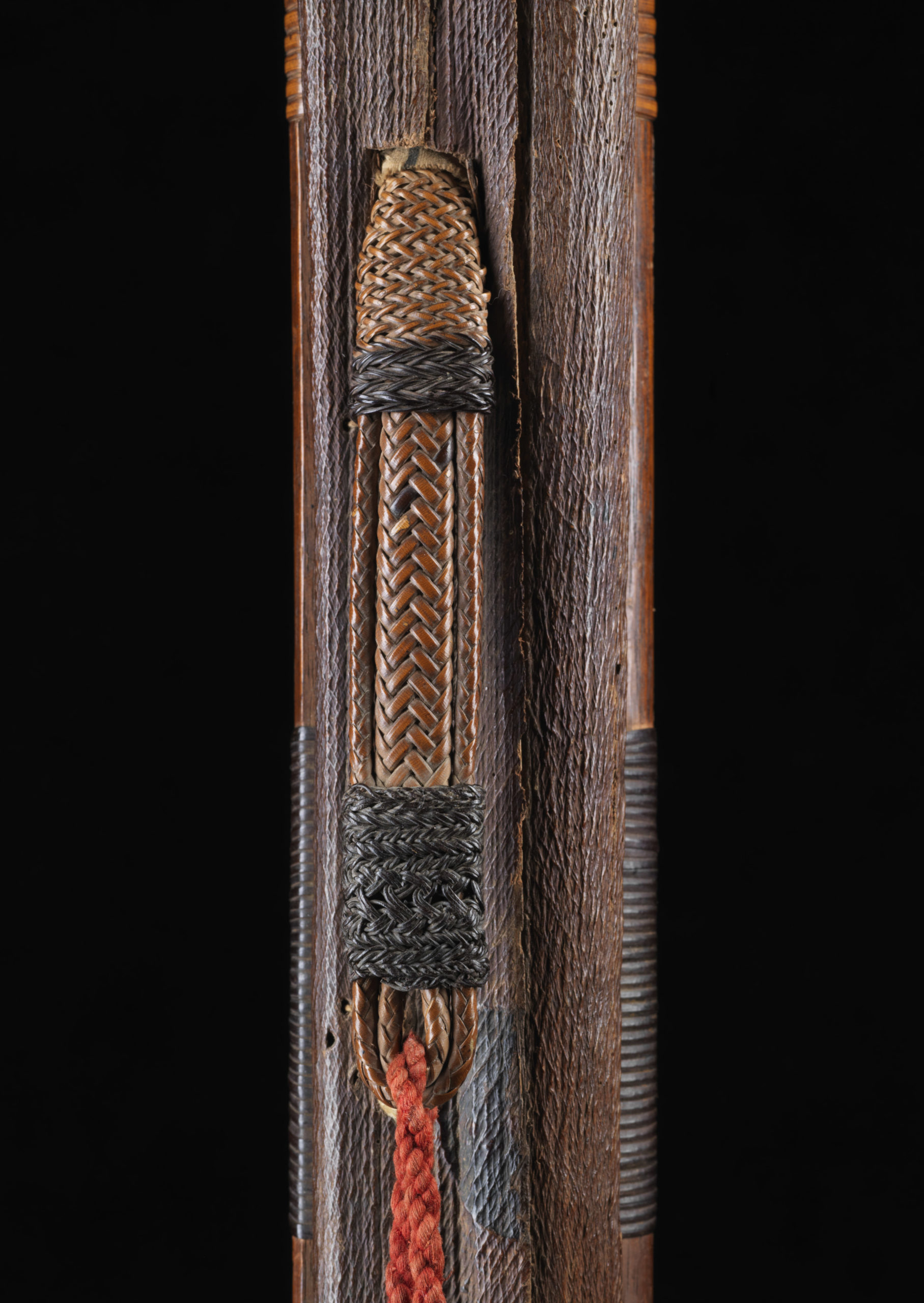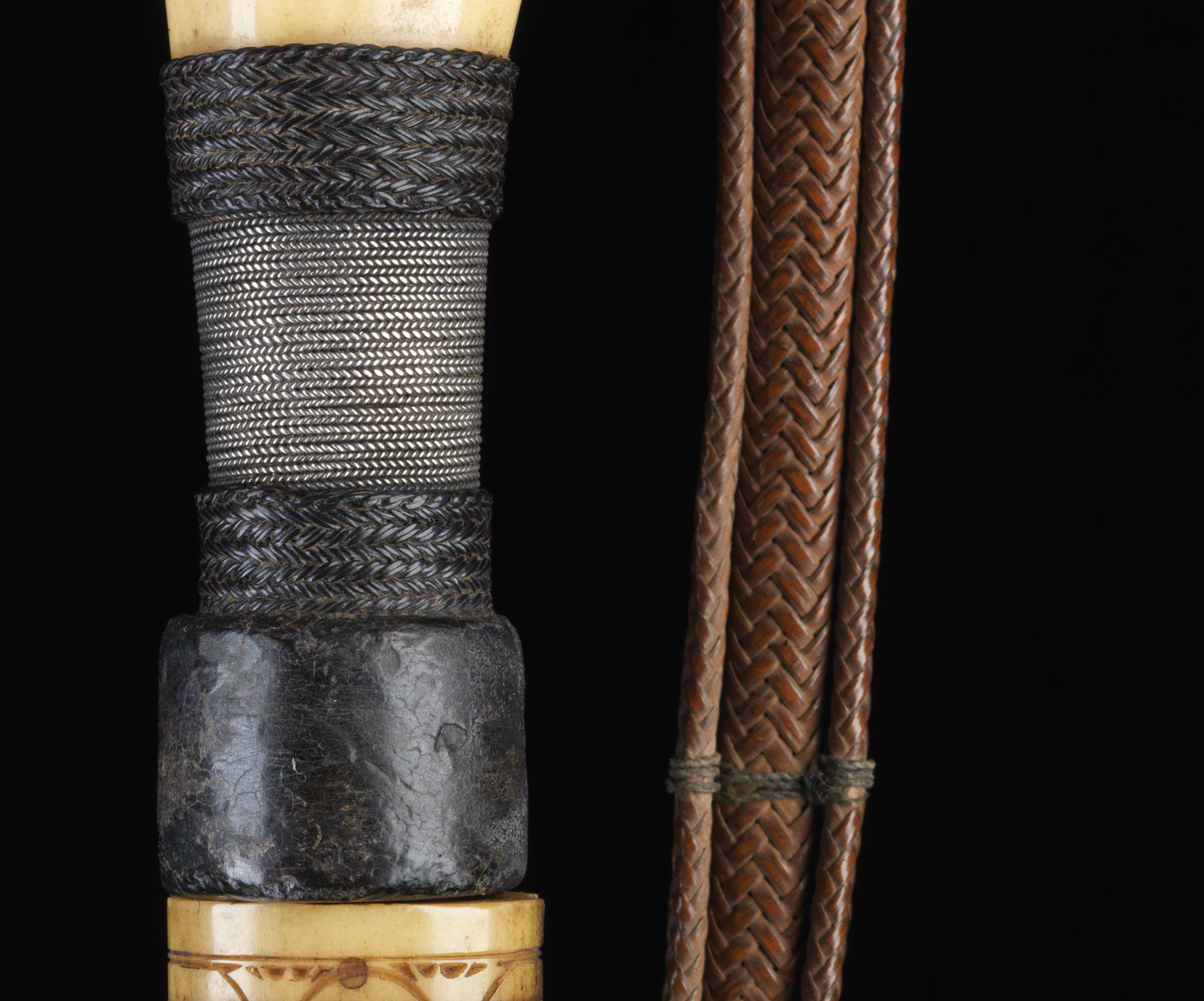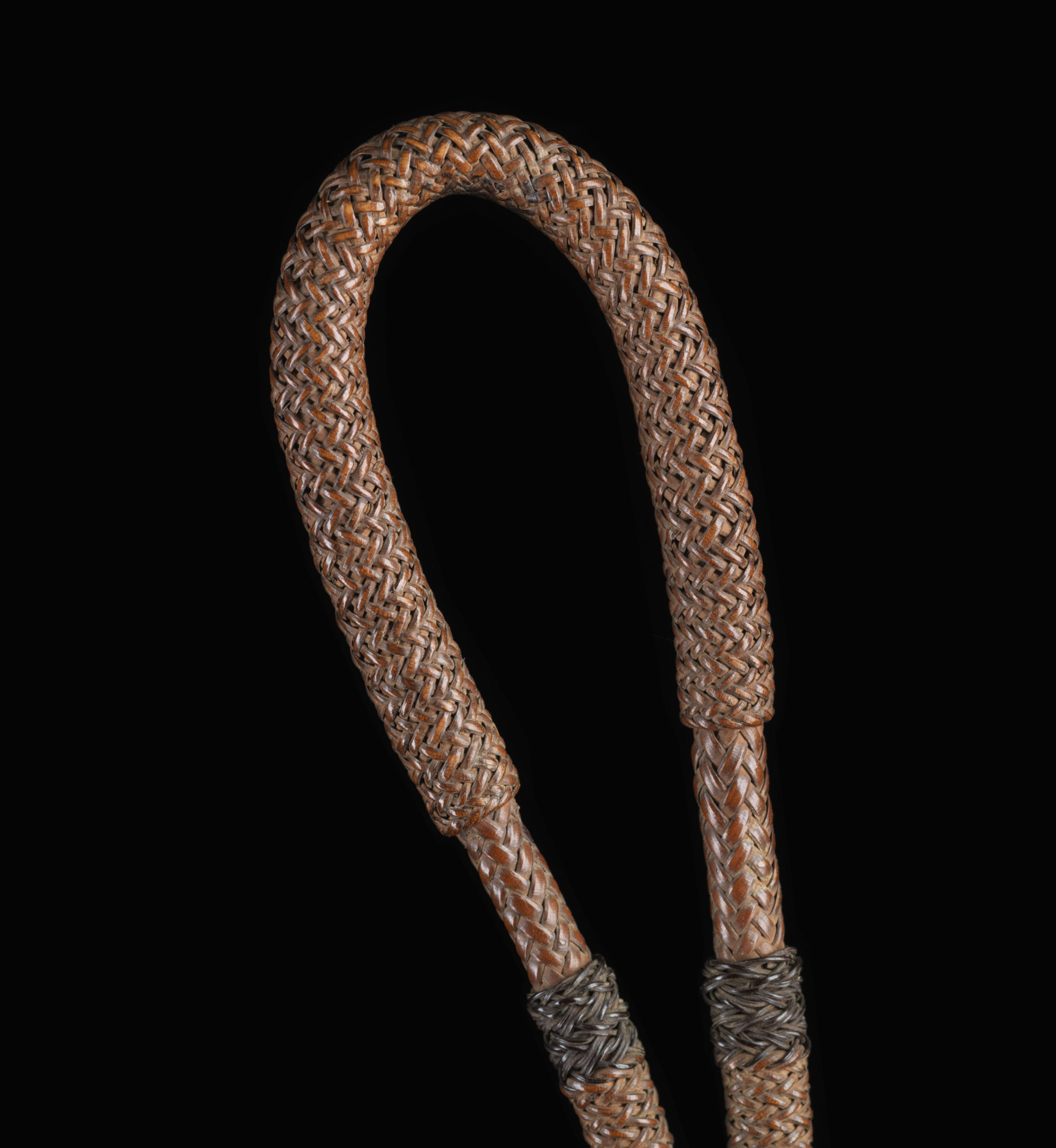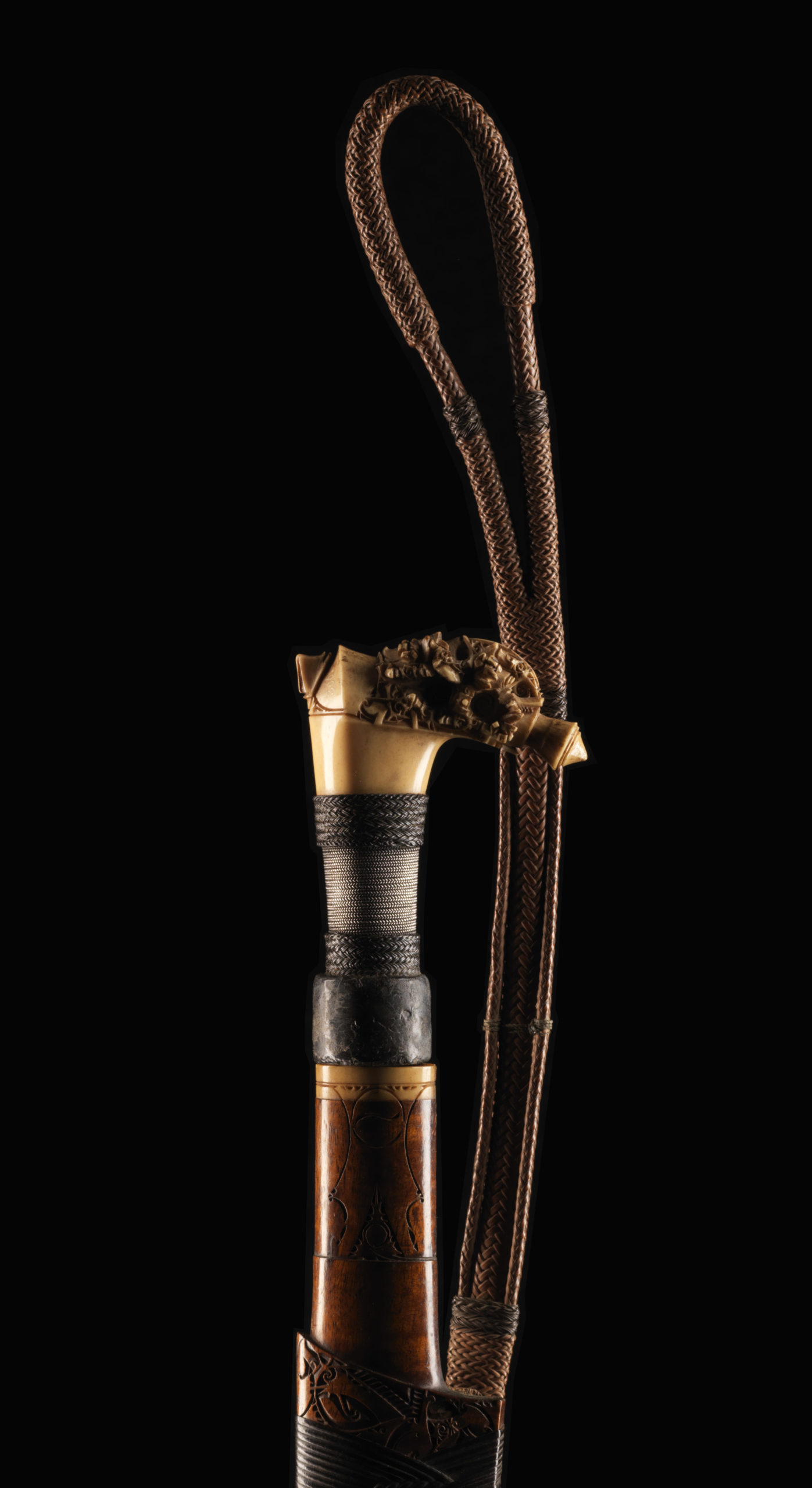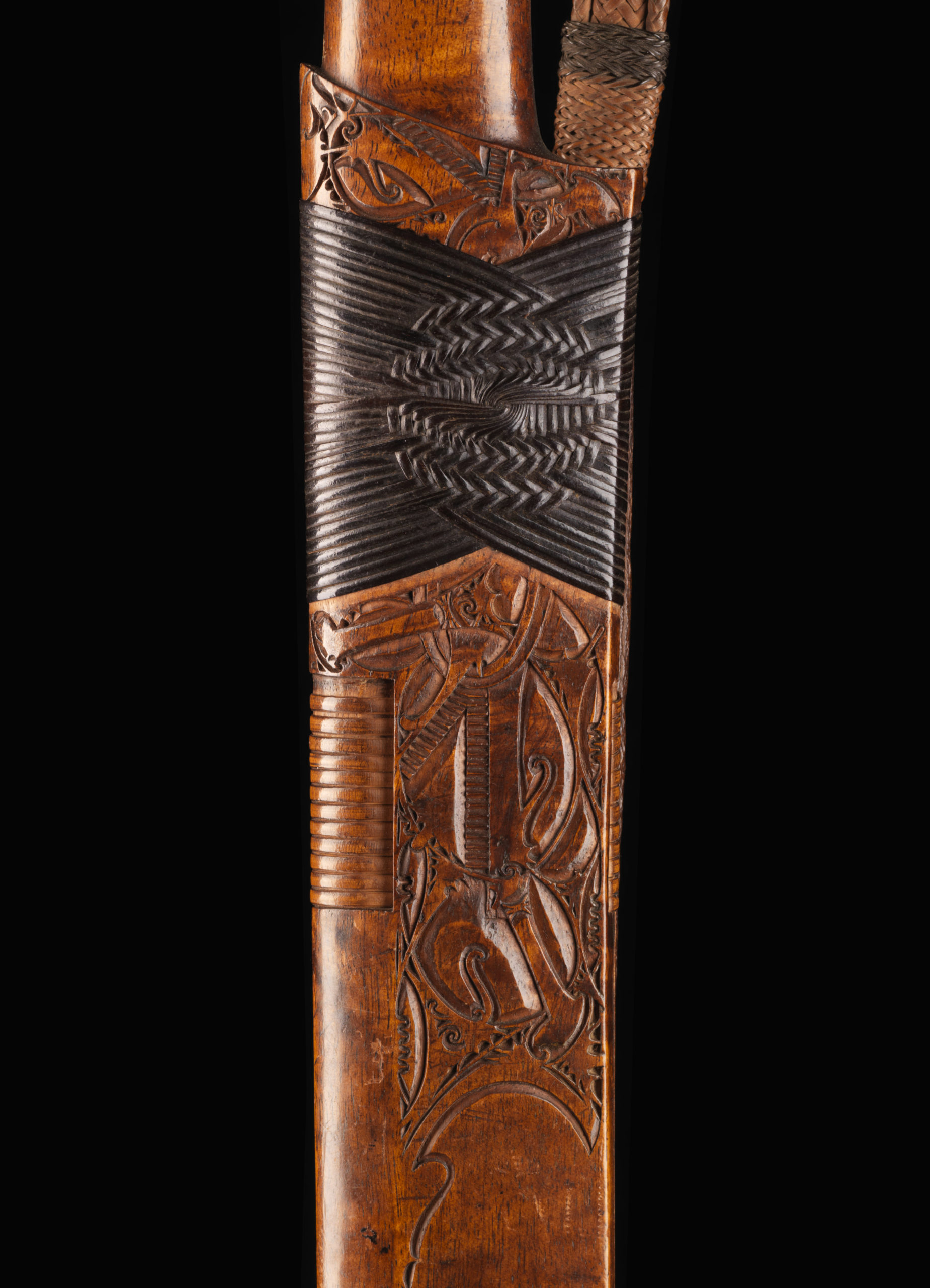Mandau
| Object | Mandau “parang ilang”, “malat” |
| Culture | Borneo / Kalimantan, Dayak, Bahau region (Kayan, Modang ?), possibly Kutai |
| Time | 19th century, blade possibly older |
| Dimensions | Length 65 cm |
| Material | Steel, soft metal, stag horn, rattan, wood, textil cord, bone, palm leaf |
The object presented here is a mandau of the highest rank. It can be ascribed to the ethnic group of the Kayan, who are resident in East Kalimantan (Indonesia, West Kutai regency) and are counted among the Bahau-Dayak after the settlement area. The term covers about 60.000 – 100.000 people, depending on their identity. The kayans (like the other Dayak) are heterogeneous and terminologically an ethnogenetic-political construct; the kayan languages alone, for example, comprise 17 subgroups.
The outside of the blade is convex, the back is hollow-scraped (“chisel-grind”). The back is decorated with openwork chisel-grind, which according to Nieuwenhuis is to be interpreted as stylised female sexual organs (apotropaic element; protective spell for the sword soul). Underneath this is a series of inlaid brass S-lines (mata joh). The blade has a distinct refined structure and probably dates from the 18th or earlier 19th century. It has a forged cutting edge of fine steel free of blowholes. The back is decorated with high quality file work. The chiselling work can be described as exorbitant. It is significant in the context of the decorative forms of the blades that, according to Nieuwenhuis, who is quite credible in comparing them with wall panels and tattoo motifs (whose significance is clear and has been confirmed by informants), the representational reproduction of gender motifs, both female and male, certainly plays a central role on swords. This makes sense against the background of the apotropaic significance of this motif. The curlicues and spirals, especially on Kenyah blades, are recognisable as stylised female genital lips. Tromp calls the simple form leng ook monong, longna (with filed in decoration), lidjip (with filed in decoration, breakthroughs and the fine “trunks”, spirals and curlicues, which look fragile, but are backed up and do not limit the usefulness of the blade, and li potong, probably the most elaborate form of back decoration, which occurs exclusively on the best Longglat and Bahau (Ot Danum) blades and whose production puzzles even experienced metal craftsmen. It is nonsense to interpret the non-ferrous metal inlays or brass pins in the blade as a “counting method for victims” or “murder register” (according to Hein and Tromp), as it has been asserted in literature.
The mandau discussed here shows a clear refining structure and is probably made of locally melted iron or steel. Although technically inferior to industrial qualities, this steel enjoys a particularly high status. In Nieuwenhuis’ time it was already unusual to melt iron oneself; only the Longglat were apparently still active in the “smelting business” around 1900. Smelting took place in shallow earth pits, which were alternately filled with charcoal and ore and then melted down under air supply (double piston blower). Steel production has a long tradition on Borneo. In Santubong (Iban: Si-antu ubong; “ship of the dead person’s soal”) and in the Niah Caves near Brunei, many indications of extensive iron smelting (slag) since the T’ang period have been found. Corresponding finds have also been made in Bukit Maras, Bongkissam (Sarawak Delta) in Tanjong Kubor Bay and on the Buah River. From Apo-Kayan comes the once famous Mantikai iron (traditionally the best iron for mandau). The Tayan / Kapuas areas have been known since ancient times among the Dayak for iron deposits and good material.
The scabbard (hulo) is made of selected ranggu wood (Cashew) and decorated with rattan ornamental binding (pusat blanak) and fine notches and low relief. It shows elegantly stylised aso dragons with long rows of teeth and a skull motif on the mouthpiece (head trophy). The scabbard mouth is reinforced with a bone ring. The back of the scabbard has a sheath made of palm leaf and the nyu or tempesing, the long-stemmed all-purpose knife, which is here executed as an independent work of art. It has an upper part of the handle made of antlers over a smooth dark hardwood shaft, which is executed as a stylised unspecific ornament (abstracted aso). The carrying strap of the mandau is woven from fine rattan, the button (hulo bukar) from wood. Probably a more precious amulet version was exchanged here (e.g. hornbill bird beak attachment etc.).
Supplementing Literature Back to room view



